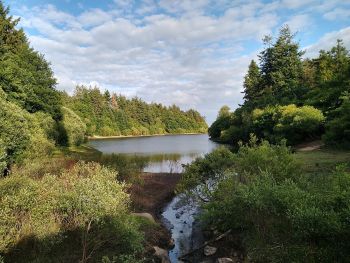Flow Regulation

|
| Gathright Dam in Virginia.
(Image Source: Wikimedia) |
“Reservoirs may improve water quality by merely permitting the management of flow. This management may include maintenance of minimum flows, blending selective releases from one or more reservoirs to maintain a given stream quality, and the exclusion of a flow from a system by diversion.[1]
“Minimum flow is often maintained in a stream for navigation, recreation, fish and wildlife, and water rights purposes. Such flows may also aid in maintaining acceptable water quality.[1]
“There is general agreement that water may be stored and selectively released to help reduce natural water quality problems where source control is not possible, and also that water should not be stored and released solely to improve water quality where similar improvement may be achieved by treatment at the source. The use of a water resource to dilute treatable waste materials is regarded as the misuse of a valuable resource in most cases”.[1]
“In designing a reservoir to supply water for navigation and low-flow augmentation, the objective is significantly different from objectives for the other purposes that have been discussed previously in this chapter. The objective is to supplement flows at one or more points downstream from the reservoir. For navigation, these flows aid in maintaining the necessary depth of water and alleviate silting problems in the navigable channel. Low-flow augmentation serves a number of purposes including recreation, fish and wildlife, ice control, pollution abatement, and run-of-river power projects. Under certain conditions, low-flow augmentation provides water for the other purposes discussed in this chapter. For instance, if the intake for a municipal and industrial water supply is at some point downstream of the reservoir, the objective may be to supplement low flows at that point”.[1]
Best Practices Resources
![]() National Engineering Handbook: Chapter 5 - Streamflow Data, NRCS
National Engineering Handbook: Chapter 5 - Streamflow Data, NRCS
Citations:
Revision ID: 7398
Revision Date: 07/21/2023
